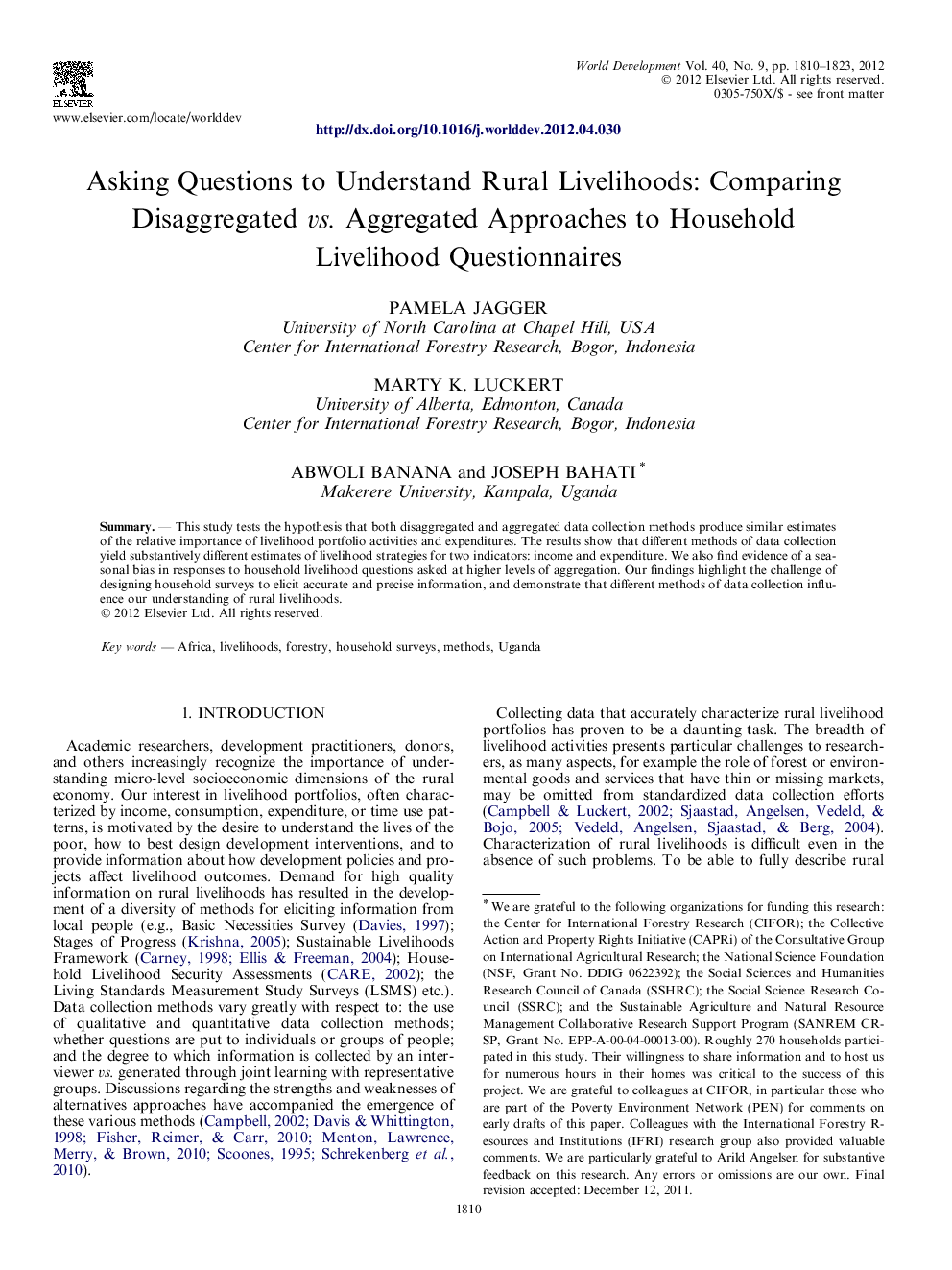| Article ID | Journal | Published Year | Pages | File Type |
|---|---|---|---|---|
| 992194 | World Development | 2012 | 14 Pages |
Abstract
SummaryThis study tests the hypothesis that both disaggregated and aggregated data collection methods produce similar estimates of the relative importance of livelihood portfolio activities and expenditures. The results show that different methods of data collection yield substantively different estimates of livelihood strategies for two indicators: income and expenditure. We also find evidence of a seasonal bias in responses to household livelihood questions asked at higher levels of aggregation. Our findings highlight the challenge of designing household surveys to elicit accurate and precise information, and demonstrate that different methods of data collection influence our understanding of rural livelihoods.
Related Topics
Social Sciences and Humanities
Economics, Econometrics and Finance
Economics and Econometrics
Authors
Pamela Jagger, Marty K. Luckert, Abwoli Banana, Joseph Bahati,
